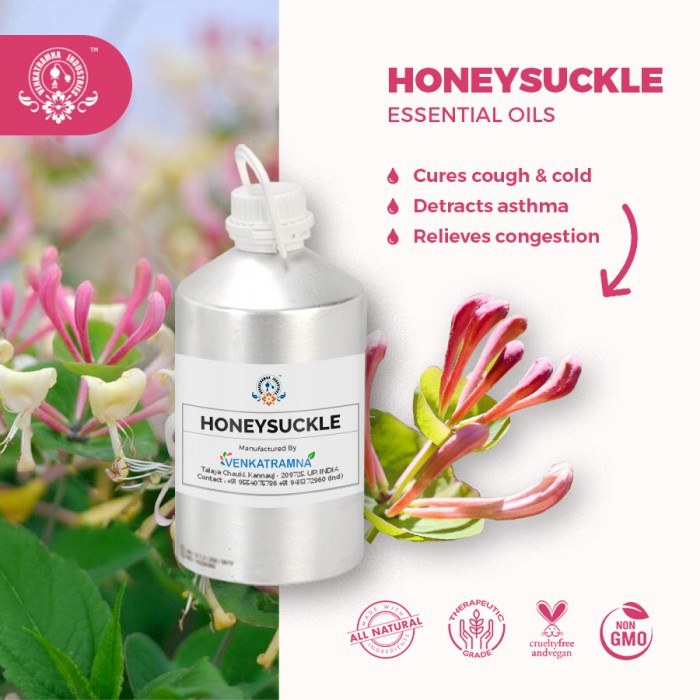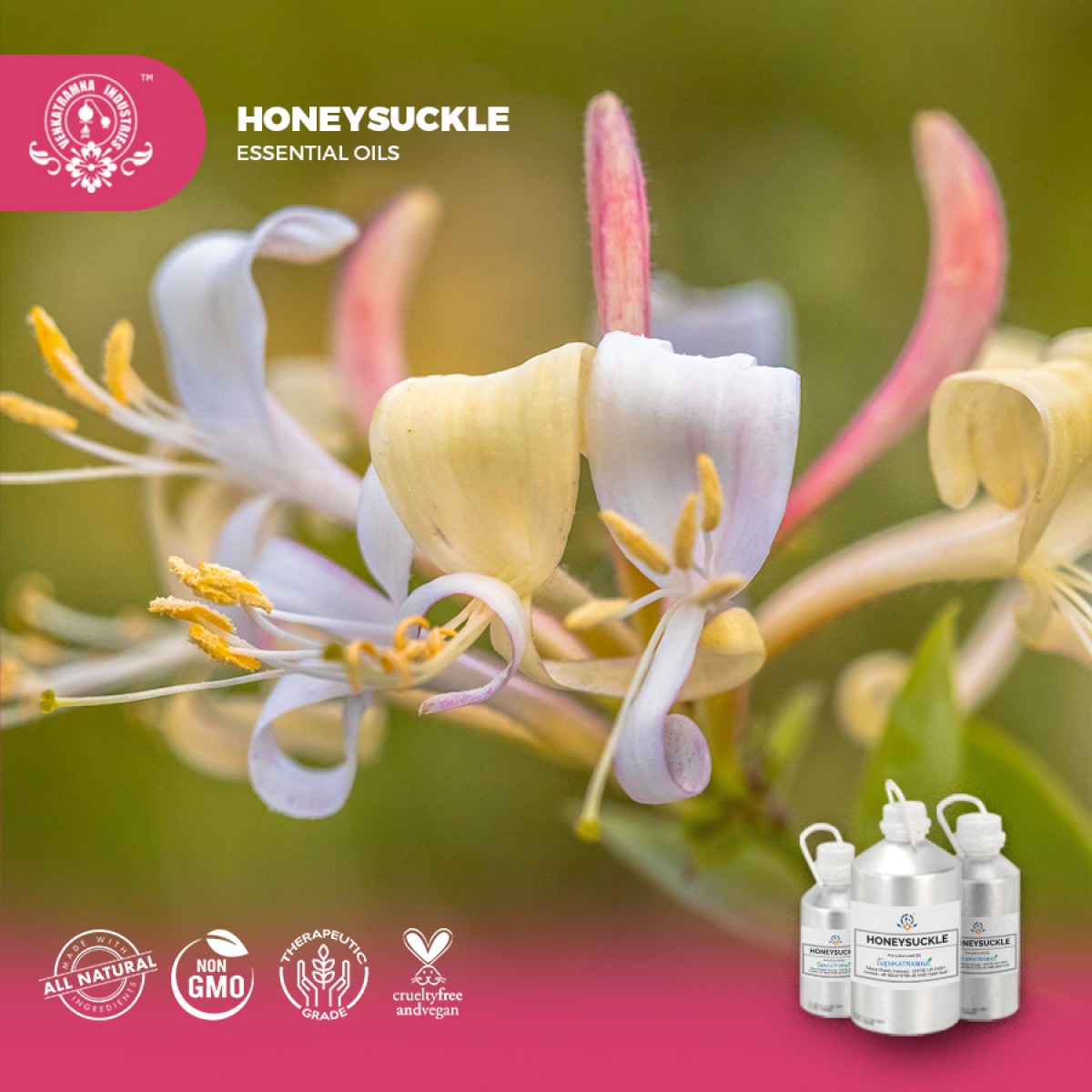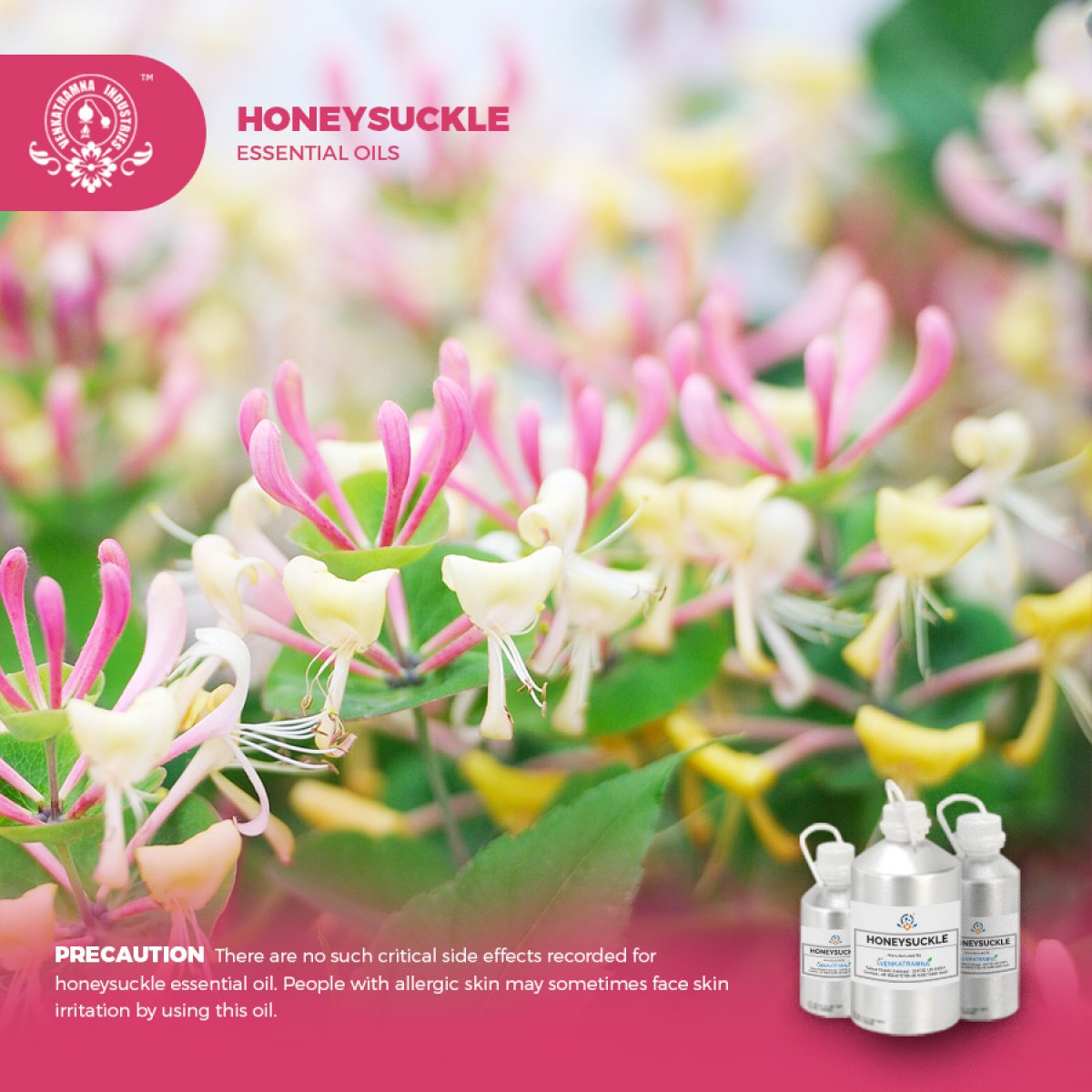Botanical Name: Lonicera Caprifolium Common name: Honeysucle Plant Read More
|
Botanical Name: |
Lonicera
Caprifolium |
|
Common name: |
Honeysucle |
|
Plant family: |
Caprifoliaceous |
|
Genus: |
Lonicera |
|
Appearance/Color: |
A fine liquid with a yellow to brown consistency. |
|
Odor: |
Medium note as it spreads floral odor |
|
Blends With: |
Sandalwood and Ylang-Ylang, it proves as the
best remedy for many ailments |
|
Origin: |
India |
|
Source: |
Flowers &
twigs |
|
Method of
Extraction: |
Steam Distillation |
Honeysuckle, (genus Lonicera), genus of about 180 species of ornamental shrubs and climbers of the family Caprifoliaceae. Honeysuckles are native to temperate zones of both hemispheres, but they also grow in the Himalayas, southern Asia, and North Africa; the majority of species are found in China. Honeysuckles flourish in any ordinary garden soil, and a number are cultivated for their attractive flowers.
DISCLAIMER
The complete range of conditions
or methods of use are beyond our control therefore we do not assume any
responsibility and expressly disclaim any liability for any use of this
product. Information contained herein is believed to be true and accurate however,
all statements or suggestions are made without warranty, expressed or implied,
regarding accuracy of the information, the hazards connected with the use of
the material or the results to be obtained from the use thereof. Compliance
with all applicable federal, state, and local laws and local regulations
remains the responsibility of the user.
The FDA has not evaluated the
statements on this website. No claims are made by Venkatramna Industries as to
the medicinal value of any products from vriaroma.com or by us. The information
presented here is for educating our customers about the traditional uses of
essential oils and is not intended to diagnose, treat, cure, or prevent any
disease. You are responsible for understanding the safe application of these products.
If you have any questions, please call or email us for further information.
As per NAHA guidelines, New Directions Aromatics
(NDA) does not recommend the ingestion of essential oils. It is imperative to
consult a medical practitioner before using Essential Oils for therapeutic
purposes. Pregnant and nursing women and those taking prescription drugs are
especially advised not to use this product without the medical advice of a
physician. The oil should always be stored in an area that is inaccessible to
children, especially those under the age of 7.
The leaves and flowers are antispasmodic,
emollient and expectorant. They are used as a cutaneous and mucous tonic and as
a vulnerary. Recent research has shown that the plant has an outstanding
curative action in cases of colitis. The seed is diuretic.
An essential oil has been extracted from the
flowers and used to make a very sweet perfume, but yields are extremely low.
COMMON USAGE
·
Heightens the psychic power
·
Treats seasonal depression & stress
·
Cures cough & cold
·
Detracts asthma
·
Relieves congestion
·
Best for abrasions
·
Acts as an antidote for edema
·
Heals sore throat
·
Lowers fever
·
Cures flu
·
Recovers from food poisoning
Ingredients:
|
S. No |
Key Constituents |
|
1 |
Linalool |
|
2 |
Geraniol |
|
3 |
Aromadendrene |
|
4 |
Eugenol |
Safety Summary
·
Hazards: Not Known.
·
Contraindication: Not Known.
Organ Specific Effects
·
Adverse skin reaction: No Irritation.
·
Reproductive toxicity: No Data Available.
Systemic Effects
·
Acute Toxicity: no information found
·
Skin corrosion/irritation: may be irritating to
skin.
·
Carcinogenicity: Not Known.
·
Toxicity:
PNEC oral: No data available
EC50 (48hours): No data available
LC 50(96hours): No data available
·
Bioaccumulation: No data available
·
Mobility in soil: No data available
·
Persistence and degradability: No data available
·
PBT and vPvB assessment: No data available
·
Other adverse effects: Do not allow it to enter
into water systems and marine environment.





 MSDS-Hoeny.pdf
MSDS-Hoeny.pdf




